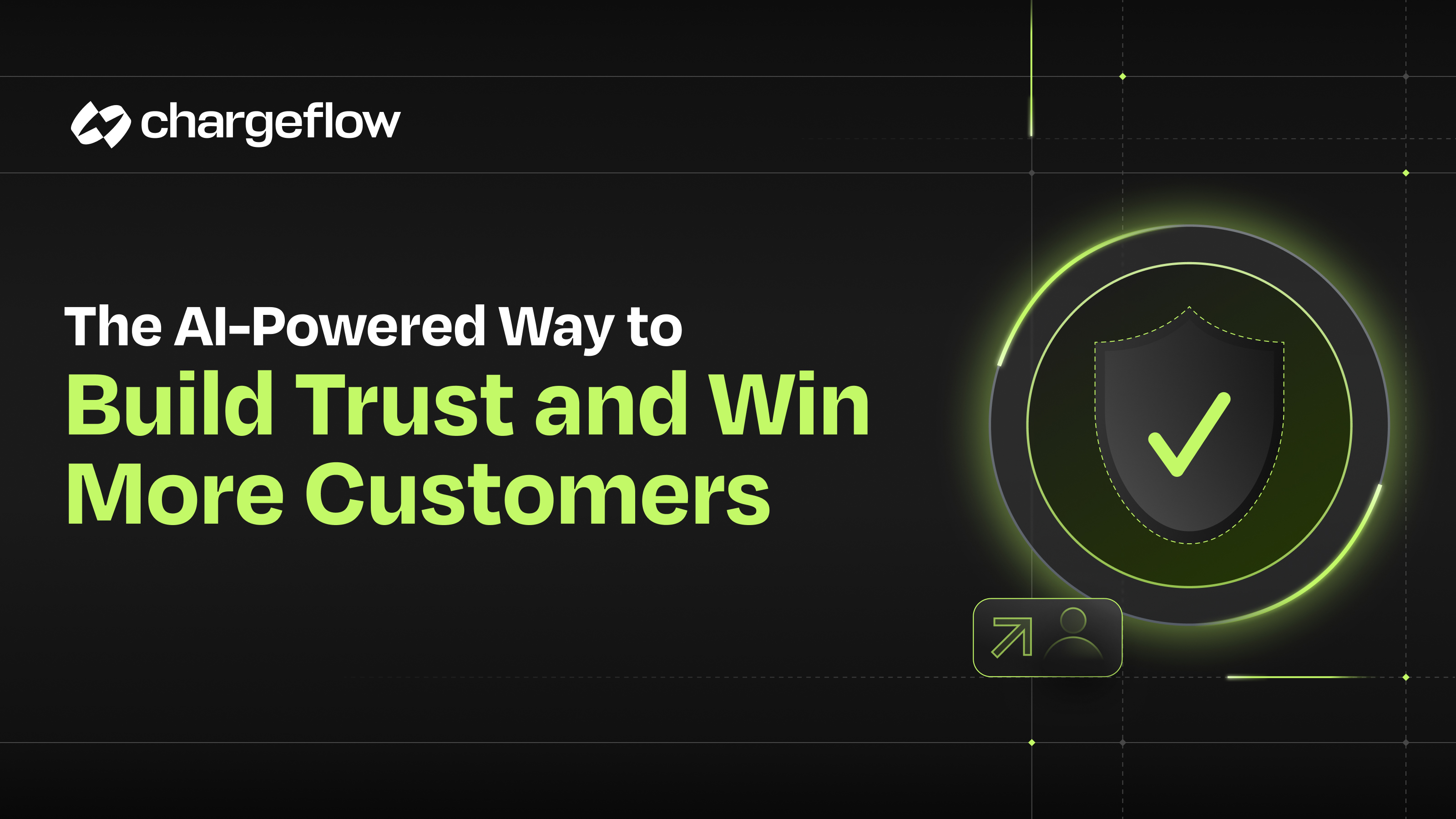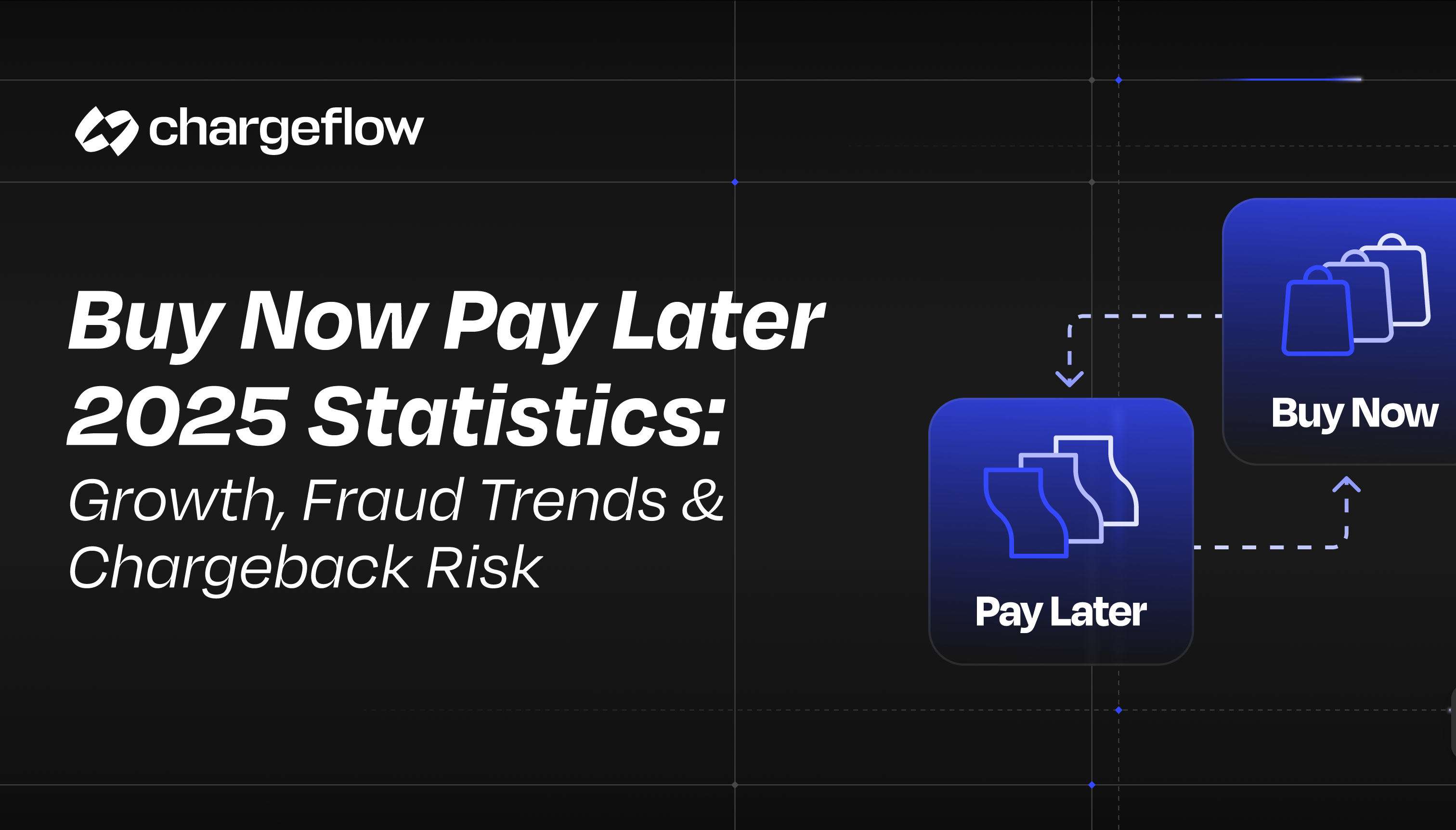What is The Chargeback Ratio, and How do You Calculate It?

Chargebacks?
No longer your problem.
Recover 4x more chargebacks and prevent up to 90% of incoming ones, powered by AI and a global network of 15,000 merchants.
Your chargeback ratio is a measure of your sales compared to the number of chargebacks you received in a given month. Learn how it effects your business
Simply put, your chargeback ratio is an aggregate of your sales compared to the number of chargebacks you received in the previous month.
Credit card networks (Visa, Mastercard, American Express, and Discover) have different ways of calculating a merchant's chargeback ratio. However, what's uniform across the board is that your chargeback ratio is the same as your chargeback rate. Furthermore, your chargeback ratio can make or mar your business --and you must understand the stories they tell about your business sustainability.
This article seeks to help clear the confusion many merchants have regarding this all-important KPI and help you make the most of the data it presents.
How to Calculate Chargeback Ratio
You calculate your monthly chargeback ratio as follows: The Number of chargebacks in a given month divided by the number of credit card transactions in the same month.
One primary reason for merchant confusion regarding the chargeback ratio is that it goes by various names in the industry. In some circles, it's called chargeback-to-transaction. In others, it's known as chargeback rate or chargeback-to-sales ratio.
Generally, most people call it "chargeback-to-transaction" ratio or ratio of chargebacks. Whatever the case, what's straightforward is that all of those descriptions ultimately refer to the same thing: The measure of your transactions that result in chargebacks.
What is An Acceptable Chargeback Ratio?
As we established earlier, every card issuer has a unique way of determining a merchant's chargeback ratio. The formula, though, is the same. That is: the number of chargebacks in a given month divided by the number of transactions in the same period or current month.
The difference, however, is the source of their data for the computation.
For example, Mastercard derives your chargeback rate by dividing the number of transactions you processed by the number of chargebacks filed in the same month. But over at Visa, there's a slight variance. They calculate your chargeback ratio by dividing the transactions a merchant processed in the current month by the number of chargebacks filed during the previous month.
Discover and AmEx go the same route as Visa.
Nevertheless, because each card brand only uses transactions processed through their network for the computation, you might get a different chargeback ratio for each network. Therefore, an acceptable chargeback rate for one card network might be problematic for another network.
So, what's an acceptable chargeback ratio? For many merchants, the answer is 1%. And that might be factual, generally speaking. But, that's not a present-day truth, as you'll see in a second.
Visa and Mastercard establish their standard thresholds with several figures to serve as reference points. Case in point, in 2019 Visa pegged their acceptable chargeback threshold at 0.9% of month-on-month transactions for an average merchant account. Yet, they kept their "Early Warning" threshold at 0.65% of month-on-month transactions and the "Excessive Chargeback Rate" at 1.8%.
Over at Mastercard, merchants that cross the 100-chargebacks-per-month or 1% chargeback ratio threshold are classified as "Chargeback Monitored Merchants." And 100 chargebacks per month or a ratio of at least 1.5% for two consecutive months results in the "Excessive Chargeback Merchant" classification. So it's not enough to say 1% is the acceptable chargeback rate. You have to look at the fine print of individual card networks.
Another vital thought to remember is that banks also influence the percentage point of the acceptable chargeback ratio. So your acceptable chargeback ratio might way lower than the industry average, depending on the bank's risk tolerance.
What Happens if Your Chargeback Ratio Is High?
Having a high chargeback-to-transaction ratio is bad news for all merchants.
First, you will be classified as a “high-risk merchant” and moved into a chargeback monitoring program. That's the card network's way of forcing you to correct the issue. Entering the chargeback monitoring program means you’ll incur excessive fees for every transaction.
Take Mastercard’s Excessive Chargeback Program as an example. They mandate every acquiring bank to provide monthly reports stipulating the activities of any listed merchant. And they charge from $50 to $300 per bank report. Not filling the report attracts penalties of as much as $1,000/report.
And they’re not the only card brand that takes such a stand. Visa’s Fraud Monitoring Program charges merchants in their high-risk tier close to $100 per chargeback incurred.
Although they levy these fees to your acquiring bank, the banks automatically pass the fees on to you with considerable service charges. When you do the math, the penalties and fees for breaching the acceptable chargeback rate are humongous.
But that’s only on the economic side of things. Being a high-risk merchant could also force your acquirer to put your account on hold. Having a merchant account reserve could lead to the ultimate termination of your account.
Without an account, you’re completely screwed. You can’t process any money. So, it's wise to take every precautionary measure to keep your chargeback rate low.

How to Keep Your Chargeback Ratio Low
Even though some merchants think that chargebacks are a cost of doing business, the actual cost of a chargeback tells a different story. We've done the math. And the risk of chargeback is mammoth. For every $1 chargeback, you lose at least $3. Statistically, 60% to 80% of all chargebacks are friendly fraud.
As we noted earlier, exceeding the acceptable chargeback rate puts your business in a difficult situation. Although you might be able to operate with a high-risk merchant account, it won’t be a ride in the park due to hefty processing fees and penalties. Hence, it makes absolute sense always to track your chargeback rate. And do everything you can to thwart potential chargebacks in their tracks.
How?
For starters, do your due diligence. Stop chargebacks arising from avoidable merchant errors.
Play by industry standards and be guided by the issuer’s regulations on authorization codes. Use fraud detection protocols like identifying fraudulent transactions on credit card payments while evaluating every payment for fraud. Don’t stop there. Evaluate the entire customer journey and be sure your sales process isn’t a roadblock. Also, use your refund policy to minimize friendly fraud activities.
Put yourself in the customer's shoes. Does your product description say the same thing as the product images? Can customers easily find your contact details and get helpful, timely responses when they reach out? Do customers know when their orders will arrive, how to return any faulty product, and when to expect their refund? Do you conduct checks to avoid sending the wrong products to customers?
If you do this due diligence, you will observe a significant reduction in chargeback claims and frauds. It will eventually improve your chargeback rate and stabilize your credit score.
Final Thoughts on Chargeback Ratio
Your chargeback ratio highlights your susceptibility to fraud. Card networks keep a keen eye on this vital KPI. And so should you. The chargeback rate shows how much effort you've put into fighting fraud and closing chargeback loopholes.
While chargebacks are an unavoidable part of eCommerce, some cases are preventable. Here's an idea. Once in a while, be the customer. Buy from your store to experience things for yourself. For instance, confirm that the entire experience, including the price at checkout, is similar to that on the product purchase page.
If you want to move a step above the basic requirements (with 50% more success rate), here it is: automate your chargeback process. Utilizing Chargeflow's dispute automation advanced technology will save you all the nightmare of fighting to maintain the status quo.
As you already know, once a chargeback happens, the damage is done. And if you don’t have accurate data and an informed mitigation framework to stop the cycle, they’ll keep happening. Chargeflow’s expertise and proven methodologies help you prevent and recover chargebacks on autopilot. With Chargeflow, you can quickly minimize your chargeback rate. Automate your chargebacks to close revenue loopholes and grow your eCommerce with ease!
Join the leading eCommerce brands in our exclusive hands-off program here.

Chargebacks?
No longer your problem.
Recover 4x more chargebacks and prevent up to 90% of incoming ones, powered by AI and a global network of 15,000 merchants.






























.png)








